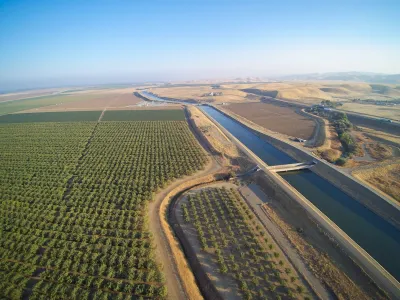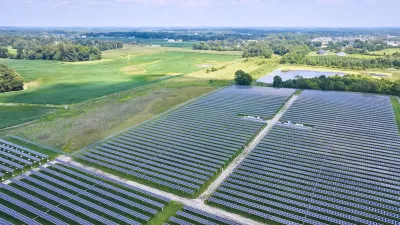California’s Project Nexus has begun generating electricity from solar panels installed over irrigation canals, with researchers and state agencies exploring statewide expansion to conserve water and boost clean energy production.

Project Nexus, California’s first solar-over-canal initiative, has begun producing electricity through solar panels installed above irrigation canals managed by the Turlock Irrigation District (TID). The pilot project, a collaboration between TID, Solar AquaGrid, UC Merced, and the California Department of Water Resources, is part of a broader effort to scale clean energy while conserving water and utilizing existing infrastructure. A UC Merced study published in Nature Sustainability found that placing solar panels over the state’s 4,000 miles of canals could generate enough electricity for 2 million homes, conserve a similar amount of water, and reduce the need for land-consuming solar farms.
As the pilot progresses with both narrow- and wide-span systems under development, the California Solar Canal Initiative (CSCI) is working to expand this concept statewide. Led by USC Dornsife’s Public Exchange and Solar AquaGrid, the CSCI is evaluating optimal canal locations, engaging potential host communities, and collaborating with a diverse team of researchers from several universities. The initiative is supported by a broad advisory council and state agencies, aiming to make the findings actionable and accelerate implementation across California.
The potential benefits of solar canal systems extend beyond power generation and water savings. By shading canals, these systems could reduce weed and algae growth, lower maintenance costs, and improve panel efficiency due to the cooling effect of water. The approach also avoids converting undeveloped land, preserving up to 50,000 acres of habitat. Amid California’s climate extremes—swinging between floods and drought—officials stress the importance of integrated solutions that support both water and energy resilience while contributing to climate goals.
FULL STORY: Consortium looks to expand canal solar projects statewide

Trump Administration Could Effectively End Housing Voucher Program
Federal officials are eyeing major cuts to the Section 8 program that helps millions of low-income households pay rent.

Planetizen Federal Action Tracker
A weekly monitor of how Trump’s orders and actions are impacting planners and planning in America.

The 120 Year Old Tiny Home Villages That Sheltered San Francisco’s Earthquake Refugees
More than a century ago, San Francisco mobilized to house thousands of residents displaced by the 1906 earthquake. Could their strategy offer a model for the present?

HSR Reaches Key Settlement in Northern California City
The state’s high-speed rail authority reached an agreement with Millbrae, a key city on the train’s proposed route to San Francisco.

Washington State Legislature Passes Parking Reform Bill
A bill that would limit parking requirements for new developments is headed to the governor’s desk.

Missouri Law Would Ban Protections for Housing Voucher Users
A state law seeks to overturn source-of-income discrimination bans passed by several Missouri cities.
Urban Design for Planners 1: Software Tools
This six-course series explores essential urban design concepts using open source software and equips planners with the tools they need to participate fully in the urban design process.
Planning for Universal Design
Learn the tools for implementing Universal Design in planning regulations.
Ada County Highway District
Clanton & Associates, Inc.
Jessamine County Fiscal Court
Institute for Housing and Urban Development Studies (IHS)
City of Grandview
Harvard GSD Executive Education
Toledo-Lucas County Plan Commissions
Salt Lake City
NYU Wagner Graduate School of Public Service





























